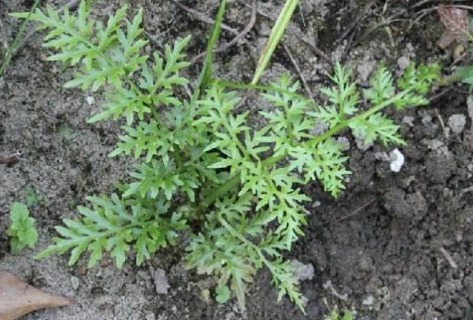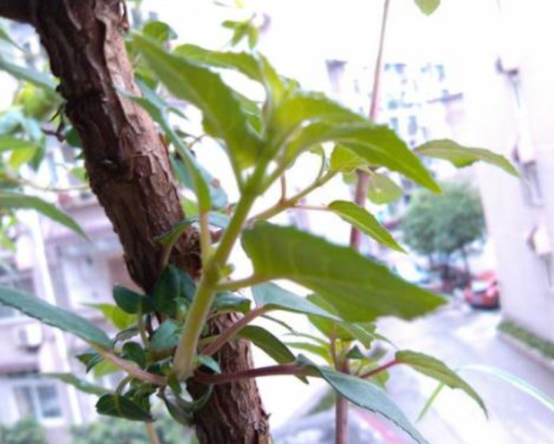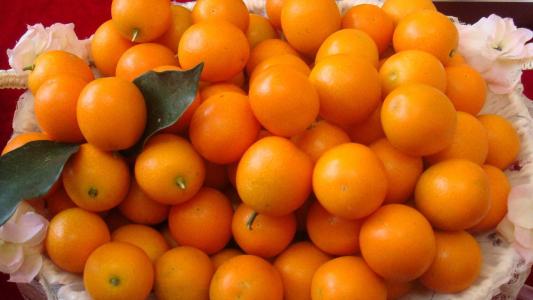Culture methods of Dryopteris
1. Planting land
Water ferns like shady and humid environments and are not resistant to high temperature. Water ferns are suitable for growing in puddles and can be planted in paddy fields, ponds or common moist soil.
two。 Soil
Dryopteris is suitable for growing in neutral or slightly acidic soil, preferably sandy soil rich in organic matter, the plant will grow more vigorously.

3. Sunshine
Water ferns prefer sunlight, but are not resistant to strong light, especially in summer, shading must be carried out, proper acceptance of light can promote plant growth, and the leaves are greener.
4. Moisture content
Dryopteris prefers to be moist and can be watered more than dry. the long-term dry environment is not conducive to plant growth, and less water should be watered in winter.
Culture methods and matters needing attention of water fern
The Latin name Ceratopteris thalictroides (L.) Brongn.
Don't call it asparagus, dragon tooth grass, water celery.
The plant kingdom.
Pteridophyta
Pteridophyta
Subclass Pteridopteris
Pteridacea
Family Pteridaceae
Pteridopteris
Distribution area tropical and subtropical
When the plant is young, it is green, succulent and soft. Due to the different water and wet conditions, the shape of the plant varies greatly, up to 70 cm. The rhizome is short and erect, with a thick root bearing silt. Leaves clustered, dimorphic; sterile petiole 3-40 cm long, 1-1.3 cm in diameter, green, Terete, fleshy, not or slightly swollen, glabrous, flat after drying; leaf blade erect, or floating when young, slightly shorter than fertile leaves when young, narrowly oblong, 6-30 cm long, acuminate, base cuneate, 2-to 4-pinnately parted Lobules 5-8 pairs, alternate, obliquely spreading, alienated, lower 1-2 pairs of pinnae up to 10 cm long, ovate or oblong, acuminate, base subrounded, cordate or subflat, 1 to 3 pinnately parted; lobules 2-5 pairs, alternate, oblique, separate or close, broadly ovate or ovate-triangular, up to 35 cm long, acuminate, pointed or rounded obtuse, base rounded truncate, with short handle, wings on both sides decurrent along pinnacle, parted Ultimate segments linear or linear-lanceolate, up to 2 cm long, pointed or rounded obtuse, base extending along the axis into broad wings, entire, alienated, each pair of pinnae homomorphic and gradually smaller upward; fertile petiole the same as sterile leaves, leaf blade oblong or ovate-triangular, 15-40 cm long, acuminate, base rounded-cuneate or rounded truncate, bipinnatifid to tripinnate. Pinnae 3-8 pairs, alternate, obliquely spreading, stipitate, lower 1-2 pairs of pinnae up to 14 cm long, ovate or long triangular, stalk up to 2 cm, upward pair of pinnae gradually smaller, 1-to 2-divided; lobes narrowly linear, acuminate, pod-shaped, 1.5-4 (- 6) cm long, less than 2 mm wide, margin thin and transparent, colorless, anti-convolute to main vein; leaf veins reticulate, mesh 2-3 lines.
1. Morphological characteristics.
When the plant is young, it is green, succulent and soft. Due to different water and wet conditions, the shape of the plant varies greatly, up to 70 cm high. The rhizome is short and erect, growing in silt as a cluster of thick roots. The leaves are clustered, type II. The stalk of sterile leaves is 3-40 cm long, 10-13 cm thick, green, cylindrical, fleshy, non-swollen, equal above and below, smooth glabrous, compressed after drying. Leaf blade erect or floating when young, sometimes slightly shorter than fertile leaves, narrowly oblong, 6-30 cm long, 3-15 cm wide, apex acuminate, base rounded-cuneate, 2-4 pinnately parted, lobes 5-8 pairs, alternate, obliquely spreading, away from each other, lower 1-2 pairs of pinnae larger, up to 10 cm long, up to 6.5 cm wide, ovate or oblong, apex acuminate, base subrounded, heart-shaped or subtruncate One to three pinnately parted Lobules 2-5 pairs, alternate, oblique, separated or close to each other, broadly ovate or ovate-triangular, up to 35 cm long and 3 cm wide, apex acuminate, acute or round pure, base truncate, with short stalks, narrow wings on both sides, descending to pinnacle, deeply parted Ultimate segments linear or linear-lanceolate, up to 2 cm long and 6 mm wide, acute pointed or rounded obtuse, the base extends along the ultimate pinnacle into broad wings, entire, alienated from each other; the second pair of pinnae are 3-5 cm from the base, and the upward pairs of pinnae are isomorphic to the basal pinnae and gradually become smaller. The stalk of fertile leaves is the same as that of sterile leaves; leaf blade oblong or ovate-triangular, 15-40 cm long and 10-22 cm wide, apex acuminate, base rounded-cuneate or truncate, 2-3-pinnately parted; pinnae 3-8 pairs, alternate, obliquely spreading, stipitate, lower 1-2 pairs of pinnae the largest, up to 14 cm long, 6 cm wide, ovate or long triangular, stalk up to 2 cm long The second pair of pinnae is 1.5-6 cm from the first pair, each pair of pinnae is gradually smaller upward, one to two divisions; lobes narrowly linear, acuminate, pod-shaped, up to 1.5-4 (6) cm long, not more than 2 mm wide, margin thin and transparent, colorless, intensity reversing to the main vein, as if pseudocyst cover. The veinlets on both sides of the main vein are connected into a network, with 2-3 lines of mesh, long and narrow pentagonal or hexagonal, without embedded veinlets. The dried leaves are soft herbaceous, green, glabrous on both sides, and the leaf rachis and each pinnate axis are the same color as the petiole and smooth. Sporangia are born along the meshes on both sides of the main veins of fertile leaves, sparse, brown, covered by continuous anti-convoluted leaf margins when young, and more or less open after maturity, exposing sporangia. The spores are tetrahedral, without periphery, and the outer wall is very thick, divided into inner and outer layers, with ribbed stripes in the outer layer, arranged in a certain direction. Chromosome 2n=156.
Stem: the rhizome is short and erect, with a thick root bearing silt.
Fruit: sporangia are born along the meshes on both sides of the main vein, sparse, brown, covered by anti-convoluted leaf margins when young, and more or less open after maturity, exposing sporangia. The spore is tetrahedral, without periphery, the outer wall is thick, divided into inner and outer layers, and the outer layer is decorated with ribbed stripes.
2. Growth environment
It is often born in ponds, ditches or paddy fields, and can also grow on wet ground. Sexual yang is also tolerant to semi-yin, and paddy soil and neutral and slightly acidic garden soil are suitable for growth. The spores have strong self-fertility and will reproduce continuously after being cultivated for 2 years. Such as xerophytic planting requires a semi-overcast humid environment.
Another name for Dryopteris.
Water fern, also known as bolting, bolting beans, asparagus, dragon tooth grass, water celery, water pine grass, water iron tree, water flat cypress, water cypress, water cypress branch.
Water fern tips
Water ferns mainly live in water, mostly in ponds, or paddy fields, and relatively humid places. It likes light, can withstand semi-shade, and has a wide range of adaptability to soil. It can also be raised by xerophytes.
The distribution of water fern is relatively wide, and it is quite common in many parts of our country.
The main function of Dryopteris
In fact, water ferns are mainly used for food and medicine. Its tender leaves can be eaten, and it can also be used as medicine, to treat sores, to disperse blood and extract poison.
- Prev

one。 Cutting steps of hanging Golden Bell upside down
1. The survival rate of cutting time hanging upside down is very strong, it is suitable for cutting all the year round, but finally in spring, because spring is the most exuberant season for upside-down golden bell growth, and the temperature is neither cold nor hot, the survival rate of cutting is also the highest. the most unsuitable for cutting in winter, it is easy to fail.
- Next

Culture methods of kumquat
1. Kumquat likes sunshine and warm and humid environment, so it is best to put kumquat in a sunny place, but pay attention to moderate light in summer, so that kumquat will grow well. 2. Watering kumquat is not resistant to water and moisture, so there can be no stagnant water in watering, otherwise kumquat will rot its roots.
Related
- Fuxing push coffee new agricultural production and marketing class: lack of small-scale processing plants
- Jujube rice field leisure farm deep ploughing Yilan for five years to create a space for organic food and play
- Nongyu Farm-A trial of organic papaya for brave women with advanced technology
- Four points for attention in the prevention and control of diseases and insect pests of edible fungi
- How to add nutrient solution to Edible Fungi
- Is there any good way to control edible fungus mites?
- Open Inoculation Technology of Edible Fungi
- Is there any clever way to use fertilizer for edible fungus in winter?
- What agents are used to kill the pathogens of edible fungi in the mushroom shed?
- Rapid drying of Edible Fungi

